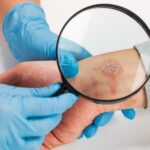
Effective clinical communication is a cornerstone of patient safety and successful healthcare outcomes. Clear, timely, and structured communication can significantly reduce the likelihood of medical errors, improve care coordination, and ensure better patient understanding. Enhancing communication skills and implementing effective communication tools are vital steps in mitigating risk and delivering high-quality care.
The Link Between Poor Communication and Sentinel Events
A significant number of sentinel events – unexpected occurrences involving death or serious physical or psychological injury – are directly linked to poor communication. The most common failures involve miscommunication during patient handovers, inaccurate documentation, or lack of real-time updates on patient conditions. These lapses can have devastating consequences that could have been avoided through more structured communication protocols.
Implementing systems that facilitate real-time data sharing, such as electronic health records with interdepartmental access, can significantly mitigate these risks. Additionally, adopting standardized handoff tools like SBAR (Situation, Background, Assessment, Recommendation) ensures that vital information is not lost during transitions of care. The goal is to create consistency in communication that leaves no room for error.
The Role of Medico-Legal Services in Enhancing Communication
One often overlooked yet critical aspect of clinical communication is the role of medico-legal services. Hiring professional medico-legal advisors, such as Briz Brain & Spine specialists, for independent medical assessments provides essential clarity in high-risk or complex cases. These experts contribute by offering detailed, unbiased evaluations that support transparent decision-making between clinicians, insurers, and patients.
These medical assessments are crucial for identifying potential risks early on and establishing a well-documented record of patient conditions and care rationale. Integrating this level of medico-legal support strengthens communication across multidisciplinary teams and ensures that both clinical and legal responsibilities are clearly understood and articulated.
Improving Communication in Multidisciplinary Teams
Effective clinical care often involves multiple professionals across departments, each with unique roles and expertise. When these professionals are not aligned through proper communication, care fragmentation can occur, leading to disjointed treatment plans or redundant procedures. Encouraging routine multidisciplinary meetings and collaborative care planning can eliminate these gaps.
Moreover, structured communication channels such as secure messaging systems and dedicated case managers help bridge the divide between departments. By fostering a team-based approach and removing silos in healthcare delivery, communication becomes clearer and risk is substantially reduced. This is especially important for managing chronic conditions or complex surgical cases where long-term coordination is needed.
Educating Staff on Communication Best Practices
While technology and structure are vital, human behavior plays a key role in communication quality. Therefore, regular training and continuing education on communication best practices should be a priority in all healthcare settings. Staff should be encouraged to adopt active listening, ask clarifying questions, and provide feedback to ensure mutual understanding.
Workshops, simulations, and role-play scenarios have proven effective in preparing staff for real-world situations where clear communication is critical. Emphasizing empathy and patient-centered dialogue also improves the therapeutic relationship and enhances patient compliance and satisfaction. Educated, communicative staff are the first line of defense against clinical missteps.
Patient Engagement and Risk Reduction
Patients are increasingly viewed as active participants in their care, and their involvement in communication processes is essential for safety. When patients understand their diagnosis, treatment options, and follow-up plans, they are less likely to experience adverse events. Clear communication also fosters trust, which can influence patient outcomes and compliance.
Clinicians should use plain language, confirm patient understanding through teach-back methods, and provide written or digital summaries of care instructions. Informed patients are empowered patients, and their ability to understand and act on medical advice significantly reduces risk on both sides.
Digital Tools That Enhance Clinical Communication
The rise of digital health tools has transformed how clinical communication is managed. Platforms like PerfectServe and CipherHealth have demonstrated that streamlined, secure messaging systems and automated follow-ups enhance responsiveness and reduce communication gaps. These platforms also allow for better documentation, helping reduce liability risks.
From automated appointment reminders to centralized messaging hubs that integrate with EHR systems, technology empowers teams to communicate faster and more accurately. However, it’s critical to ensure that digital tools are implemented alongside training and support so that all staff can use them efficiently and consistently.
Final Thoughts
Reducing clinical risk is a complex goal, but enhancing communication provides one of the most direct and effective paths forward. Whether through adopting standardized protocols or investing in digital tools, healthcare providers must prioritize communication at every level of care. Ultimately, safer, more coordinated healthcare begins with how we communicate with each other, with patients, and with legal and administrative systems.







